🎁 FREE TIRE GAUGE with $100 Order • Code: GAUGE1125 • Learn More →
How to Get the Best Gas Mileage in Winter

You’ve probably noticed gas mileage drops in winter. Here’s how you can get the best gas mileage in winter.
I’m one of those meticulous people who obsessively tracks fuel economy. Fun fact: My 1998 Corolla has averaged 35.05 mpg since I’ve owned it. However, each winter my data confirm an annoying trend: my winter gas mileage decreases. In this post, we’ll look at how to get the best gas mileage in winter.
Based on article by the INSIDE TRACK AMSOIL Blog John Baker December 21, 2021 | AMSOIL Technical Writer links added by National Synthetics staff
The U.S. Department of Energy reports that a gasoline-powered vehicle’s fuel economy can drop 12% during short-trip driving at 20ºF (-6.6ºC) compared to 77ºF (25ºC).
Let’s look at why winter gas mileage decreases and see what can be done.
The U.S. Department of Energy reports that a gasoline-powered vehicle’s fuel economy can drop 12% during short-trip driving at 20ºF (-6.6ºC) compared to 77ºF (25ºC).
1) Cold Engines are Less Efficient
This is true whether you live in northern Minnesota or southern Texas. A cold engine is less efficient than a warm engine. As the above statistic shows, an engine has a temperature “sweet spot” in which it returns optimum fuel economy.
One reason has to do with air, not fuel.
Cold air is more dense than warm air. Your engine consumes massive volumes of air – about 14 times more air than fuel. Air that’s more dense tells the computer to add more fuel to compensate, boosting performance, but reducing fuel economy.
In addition, cold fuel doesn’t ignite as readily as warm fuel.

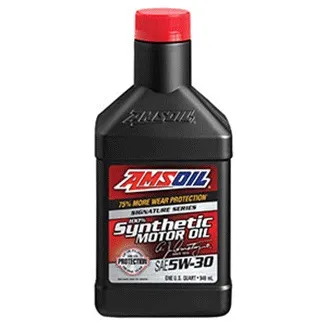
BUY AMSOIL SYNTHETIC MOTOR OIL
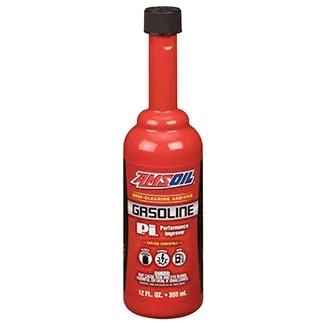
BUY AMSOIL P.I.® PERFORMANCE IMPROVER GASOLINE ADDITIVE
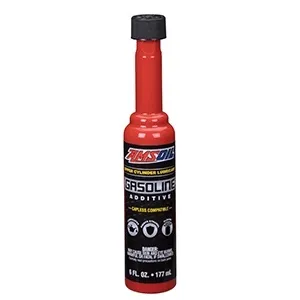
BUY AMSOIL UPPER CYLINDER LUBRICANT CORROSION INHIBITOR
Have you ever noticed that your lawnmower, chainsaw or other equipment starts on the first pull after it’s been running for a while? Conversely, it starts harder first thing in the morning when it’s cold.
The same principle applies in your car’s engine.
To compensate, your engine’s computer automatically adjusts the fuel/air mixture to be richer when it’s cold, meaning it contains more fuel. This helps the engine start more easily, particularly when it’s excessively cold.
That’s one reason today’s computerized, fuel-injected cars start way easier than the old carbureted beasts of the ’70s and ’80s. As the engine warms, the computer modifies the mixture to contain less gasoline, improving mpg.
Since a warm engine is more efficient, it stands to reason that you want to warm your engine as quickly as possible. Which is why you should avoid excessive idling.
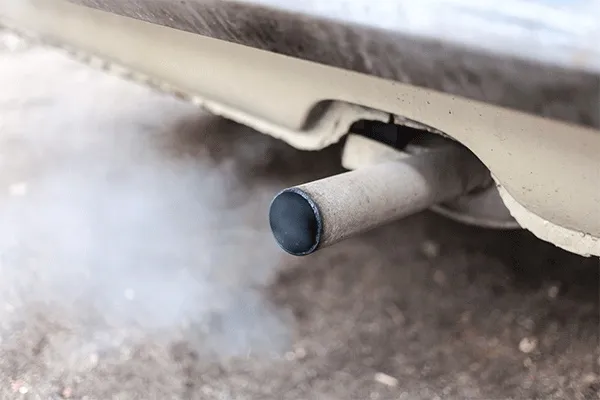
2) Idling Cars are the Fuel-Economy Devil’s Playground
Idling your vehicle to warm the engine prior to heading out in the winter is more pronounced now given the popularity of remote car starters. With just a push of a button you can start your car on a cold morning before you start your shower.
While it’s nice to climb into a warm vehicle, the practice reduces winter gas mileage and can increase the likelihood of wear.
An idling engine can burn 1/4 to 1/2 of a gallon of gas per hour. That adds up to several gallons per month if you’re a chronic abuser – and a big hit on your average mpg.
Idling also increases the likelihood of fuel dilution, which occurs when fuel washes past the piston rings and contaminates the oil in the sump. Oil that’s diluted with gasoline loses viscosity, which can affect wear protection. It also tends to form harmful varnish and deposits that reduce efficiency.
And – just my opinion – idling makes us soft. We modern folks have it easy. Maybe too easy.
There’s an old saying that goes, “A meal tastes best after one has hungered.” For me, the same principle holds here. My warm car is appreciated most after I’ve endured a cold vehicle for a few minutes.
In brutal cold, like -20ºF (-29ºC) or colder, I run my car a little longer before placing it under load. Otherwise, I idle for about a minute and drive easily until hitting the highway about three miles away.
3) Snow Slows Your Roll
Driving through the snow is unavoidable in many parts of the U.S. and Canada. Snow increases tire resistance, forcing your engine to work harder and burn more fuel to ply the roadways on a snowy day.
Think of it like this: Is it easier to walk down a clear sidewalk or one that’s covered in six inches of snow? Your car feels the same way.
Unfortunately, there isn’t much you can do about driving in the snow. When the sky bursts forth a couple snowflakes, retirees (like my parents) can turn the thermostat to 78°F (26ºC) and settle in for a day of watching The Weather Channel. They deserve it; they paid their dues.
But the rest of us have to either suck it up and drive in the snow or pack up and move south (like my wife’s parents).
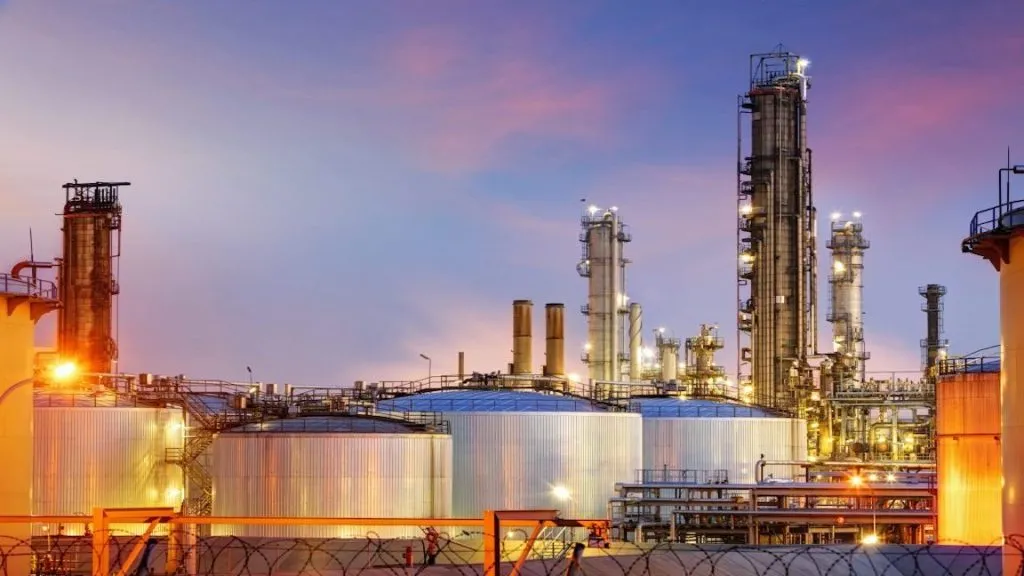
4) Winter-blend gas contains reduced energy
Refineries switch to winter-blend fuel in the fall, which evaporates more easily at low temperatures to aid in starting. It also helps the engine run more smoothly in frigid weather.
Unfortunately, winter-blend gasoline contains less energy than summer-blend gas, reducing mileage. In fact, the Environmental Protection Agency says summer-blend gas contains 1.7% more energy than winter gas.
Winter-blend gasoline contains less energy than summer-blend gas, reducing mileage. In fact, the Environmental Protection Agency says summer-blend gas contains 1.7% more energy than winter gas.
What Can You do to Boost Winter Gas Mileage?
Most of us can’t avoid driving in snow. Or bitter cold. Or using winter-blend gas.
You can, however, check your tire pressure, which tends to decrease as the temperature drops. A tire that’s down 10 psi can reduce mpg by 1%.
You can also stop idling your vehicle for more than a minute or two before driving in the winter.
Also, remove unnecessary items that cut into your mpg, like a roof rack.
What else can you do?
The same thing you should do any time of year to maximize gas mileage.
Use Synthetic Lubricants to Get the Best Gas Mileage in Winter
Synthetics flow more readily when cold, which not only helps improve wear protection, it reduces energy wasted in the form of burning fuel to circulate the oil at start up. Synthetics also improve lubricity, which further contributes to better fuel efficiency.
Maintain Your Fuel System
Dirty fuel injectors also reduce fuel economy. Fuel must be atomized into a fine mist to burn efficiently during combustion. Deposits on the injector tips disrupt the spray pattern and lead to streams of fuel instead of a fine mist, reducing mpg.
Keep injectors clean with a potent injector cleaner, like AMSOIL P.i. It reduces emissions and increases fuel economy up to 5.7%¹.
BUY AMSOIL P.I.®Once you’ve given them a deep clean, maintain cleanliness with an upper cylinder lube, like AMSOIL Upper Cylinder Lubricant.
As an added bonus, it also increases lubricity, which helps protect against cylinder wear and ring wear for maximum compression and power. In fact, it delivers 18% more lubricity than Lucas² and 20% more than Sea Foam² for better retention of horsepower and fuel economy.
Click To BUY AMSOIL UPPER CYLINDER LUBE
Keep these points in mind and practice these tips to get the best gas mileage in winter.
¹Based on independent testing using EPA tests: Federal Test Procedure 75 (FTP), Supplemental Federal Test Procedure (US06), and the Highway Fuel Economy Test (HFET). Average fuel mileage increase of 2.3 percent. ²Based on independent testing of AMSOIL Upper Cylinder Lubricant, Lucas Upper Cylinder Lubricant and Sea Foam Motor Treatment obtained on 02/13/2019 using the ASTM D6079 modified for use with gasoline. *All trademarked names and images are the property of their respective owners and may be registered marks in some countries. No affiliation or endorsement claim, express or implied, is intended by their use.
*All trademarked names and images are the property of their respective owners and may be registered marks in some countries. No affiliation or endorsement claim, express or implied, is intended by their use.
Do you want to become an AMSOIL Preferred Customer?
Let’s do this. Simple as can be!
Become an AMSOIL Preferred Customer Today!
BUY AMSOIL PRODUCTS WITH EASE!
At National Synthetics we’ve been providing superior AMSOIL Products & services to our customers for over a decade.
Please reach out to us if we can answer any questions or help you with AMSOIL products.
Recommended AMSOIL Products
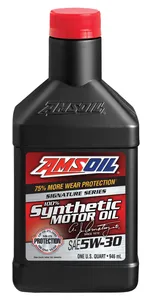
AMSOIL Signature Series 5W-30 Synthetic Motor Oil
Premium protection for your engine with 75% more engine protection against wear.
- ✓ 75% more wear protection
- ✓ 50% more cleaning power
- ✓ Guaranteed protection for UP TO 25,000 miles
Protect Your Engine with AMSOIL
Experience the difference premium synthetic lubricants make. Shop with confidence through your authorized AMSOIL dealer.
Browse AMSOIL Products











